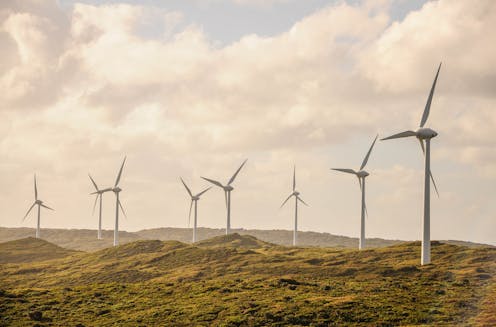Is using the Future Fund for housing, energy and infrastructure really ‘raiding Australia’s nest egg’?
- Written by Mark Crosby, Professor, Monash University

Australia has a seriously big “nest egg”. The Future Fund – our sovereign wealth fund set up in 2006 – now manages about $230 billion.
Specifically, its remit is to “invest for the benefit of future generations of Australians”. That’s long been interpreted as earning the best possible return on investment, without unacceptable risk.
Along with a few other smaller public wealth funds, it’s managed independently, on behalf of the government.
So the government ruffled feathers this week when it announced a new investment mandate which, for the first time, will require it to prioritise specific investments in Australia:
- increasing the supply of residential housing
- supporting the energy transition
- delivering improved infrastructure
These might all seem like reasonable priorities for Australia. But from those who thought this directive was a deviation from the Future Fund’s founding aims, criticisms came thick and fast.
Shadow Treasurer Angus Taylor accused Labor of “raiding Australia’s nest egg” for its own “pet projects”.
Peter Costello, who set up the fund when he was treasurer, said it would undermine the fund’s independence and lead to lower returns.
It’s quite possible, albeit unclear, that requiring the fund to prioritise certain kinds of investments will lead to lower returns.
There’s a more pertinent question. Why can’t the government fund these priority projects through debt rather than by spending sovereign funds?
History of the fund
The Future Fund’s initial purpose was actually to generate an asset pool that could cover government liabilities for future public sector pensions.
When it was established in 2006, the Australian economy was in a golden era of budget surpluses and revenues generated by mining and the China boom.
With public debt paid off, there were suddenly questions about the need for a government bond market (used to borrow money).
Australia was also asking whether it should invest its wealth in a new sovereign wealth fund.
The thinking behind the Future Fund was that Australia’s surpluses would not last forever, and a major liability that the government would one day have to face would be defined pension payments to the public service.
A decision was made to build a sovereign wealth fund to fund this liability, and relatedly, a decision to keep the government bond market alive.
The return of government debt
As we now know in hindsight, the global financial crisis brought an end to the era of budget surpluses. That created new questions about the role of the Future Fund.
With government debt rising, it was not obvious that maintaining a separate giant asset like the Future Fund continued to make sense. Why not simply use it to pay down debt?
As always, these questions come down to basic financial engineering.
If, hypothetically, the government was paying 5% interest on its debt, but could generate 6% on Future Fund earnings, it would be better to keep the Future Fund going than to spend it on debt reduction.
The Future Fund now manages assets of around $230 billion. National net debt is forecast at more than $880 billion for 2024–25 and is expected to keep rising.
The government also used this week’s announcement to promise there would be no drawdowns from the fund until at least 2032–33, by which time it’s expected to grow to $380 billion.
Nonetheless, this financial engineering equation will remain a key question for the government.
Will the new mandate affect returns?
Currently, the Future Fund’s mandate is to maximise returns, to build the biggest pool possible to fund the government’s future liabilities. Specifically, its mandate currently targets a return of 4–5% per year above the rate of inflation.
Will restricting what the fund can invest in reduce its total returns? It is reasonable to think that any constraint on investment decisions could have some negative impact on returns – and critics have certainly made that case this week.
The evidence on how mandates such as sustainability requirements affect investment returns is mixed. Analyses have shown that carefully constructed portfolios can perform well, but this is not always the case.
The key questions for the Future Fund become how much money gets allocated to these types of projects and how binding the mandates turn out to be.
Reasonable instructions to focus on green energy investments, housing and similar alternative assets might make sense in a national sense, but in terms of government debt and the purpose of the Future Fund, they muddy the waters.
Should the government just borrow for projects instead?
An alternative to having the Future Fund allocate funding to preferred government priorities would be to have the government simply borrow the money itself and keep the Future Fund assets separate.
If the government is going to support and fund these activities in either event, whether it does so via its debt or its assets doesn’t matter. The government’s net asset position is the same.
Australia is still in the position of having a relatively low national debt position relative to OECD countries, and funding costs are low. As long as we maintain fiscal discipline, this will continue to be the case.
Authors: Mark Crosby, Professor, Monash University



